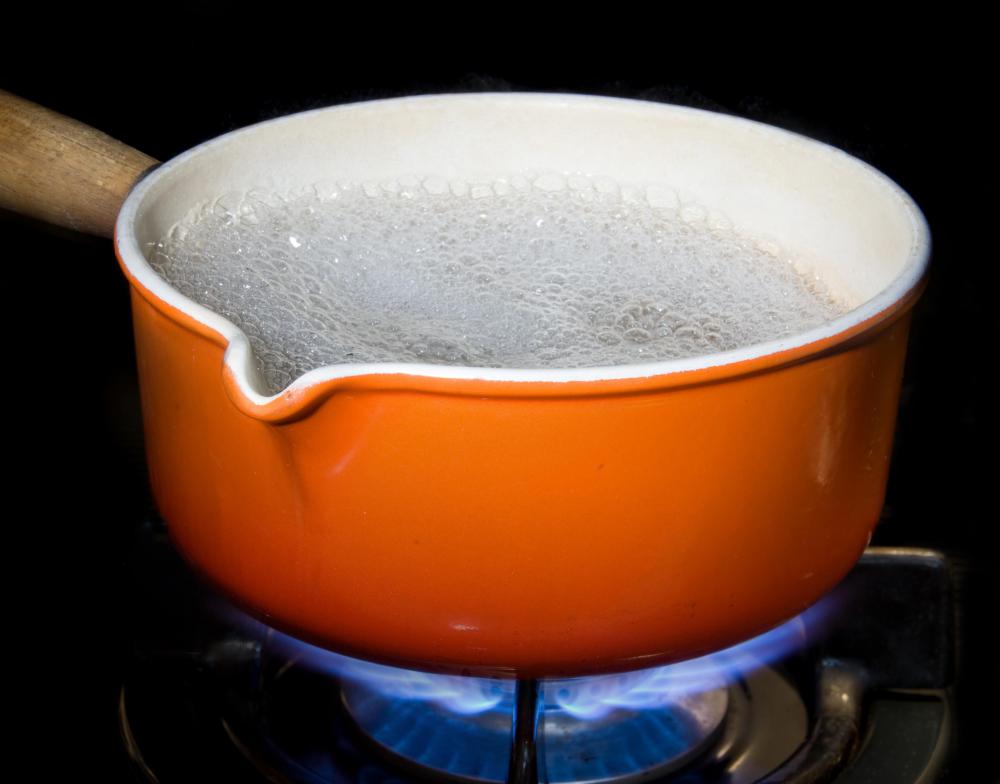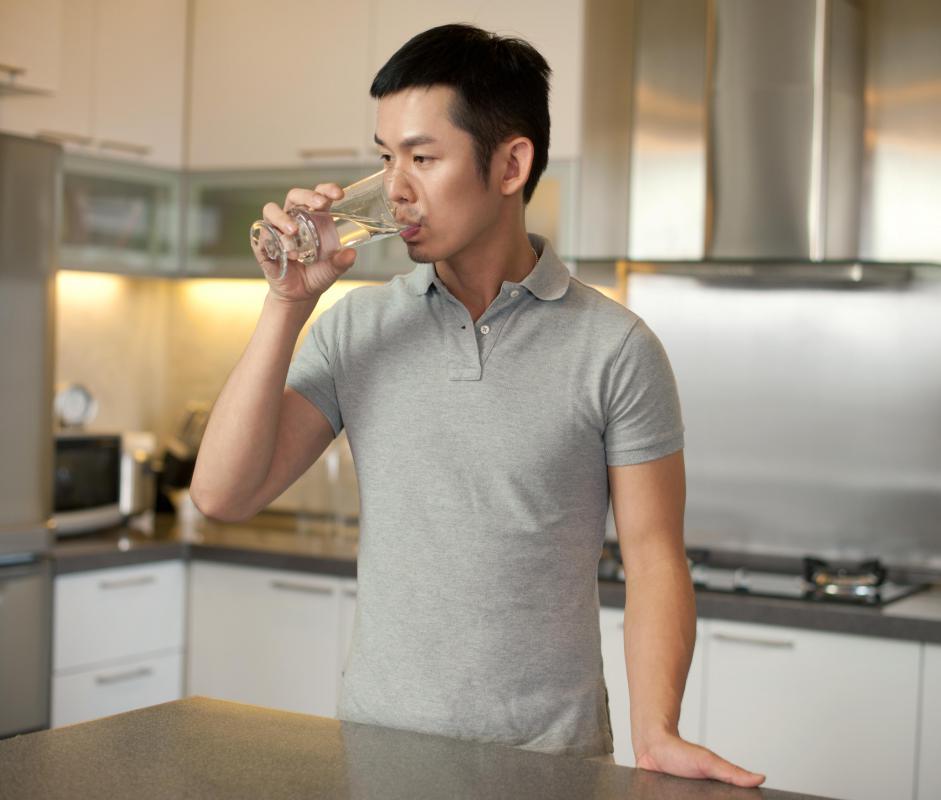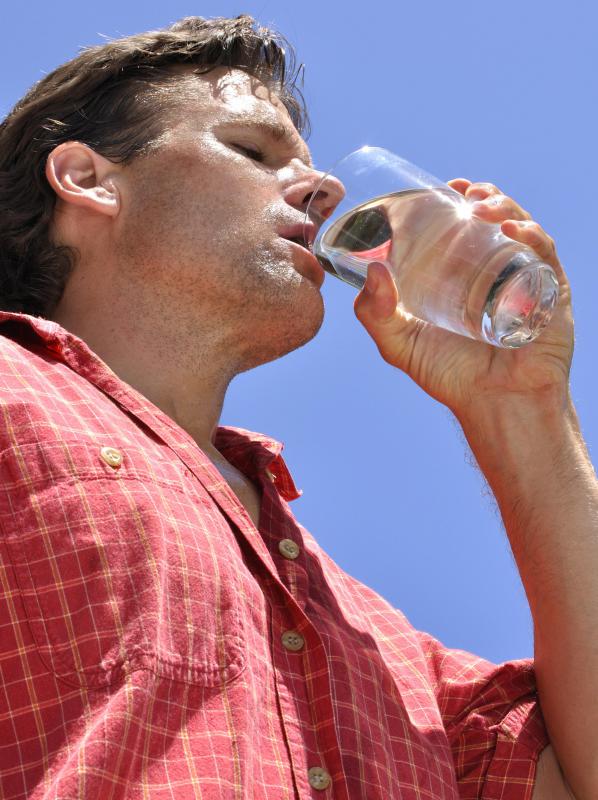At HomeQuestionsAnswered, we're committed to delivering accurate, trustworthy information. Our expert-authored content is rigorously fact-checked and sourced from credible authorities. Discover how we uphold the highest standards in providing you with reliable knowledge.
What Is the Best Way to Store Water?
The best way to store water is usually in an air-tight container away from direct sunlight and in a location that is relatively constant in terms of humidity and temperature shifts. There are a number of reasons why people might want to store water, ranging from temporary one-time use to emergency preparedness. One of the first things a person should consider is the overall volume they hope to set aside. It’s usually easiest to keep water in small containers, as these tend to resist bacterial growth and outside contaminants better than larger vats or external storage units like reservoirs or tanks. Larger storage systems usually need a developed purification or filtration system. In any event, it’s important to properly sanitize the containers, and keep them away from corrosive or harmful materials. This is particularly important for water that’s intended to be kept for a long period of time.
Think About How Much Is Needed

One of the first things people should think about is how much water they want to store. For emergency purposes, one gallon (about 3.8 liters) of water is generally said to be sufficient per person for three days. This amount is usually expected to be split about evenly for drinking, preparation, and sanitation. While these are general guidelines, specific individual needs should be considered. For example, children and the elderly often require more water as well as individuals with certain medical conditions. Having at least some idea of how much is needed can help make informed storage choices.
Find an Appropriate Container

There are a variety of types of containers that can be used to store water, and choosing the one best suited for the circumstances at hand is often very important to success. Glass containers can be used, and these are often the easiest to clean. Primary disadvantages include their heaviness and fragility, though; glass bottles and jugs are much more prone to breaking than other alternatives.

Food grade plastic containers are often the best option. These sorts of containers can be purchased at a variety of places including camping or surplus stores. Re-purposing containers to hold water is also an option. Soft drink or bottled water containers are often best. Milk and juice containers can also be used, but since it can be difficult to remove the proteins and sugars left behind, they're typically not recommended; if they are used, they must be very thoroughly washed.
Importance of Proper Sanitizing

Regardless of the type of container being used, the container itself will need to be properly cleaned and sanitized before being filled with water. Plastic and glass containers that are purchased specifically for storing water will normally come with cleaning instructions. Directions for properly cleaning re-purposed containers vary. The US federal government suggests cleaning the container with dishwashing soap and water, and then rinsing the container thoroughly. Next, the clean containers should be properly sanitized with a mixture of bleach and water — about 1 tablespoon (about 15 milliliters) of chlorine bleach per gallon (about 3.8 liters) of water.
Long-Term Storage Considerations

Once properly cleaned and sanitized, the containers can usually be filled with tap water. If intended for long-term storage, though, it’s often a good idea to sanitize the water, too, particularly in places where tap water isn’t clean or of consistent quality. Untreated water, like well water, can be treated by adding a small amount of chlorine bleach. The amount of chlorine to be used varies on the strength of the chlorine and the amount of water being treated. The chlorine will help guard against bacteria or viruses in the water. Boiling water is another way to treat water.

While water can be stored for long periods of time, dating the water will help ensure the best quality. Water stored at room temperature should generally be kept away from direct sunlight and hazardous chemicals such as pesticides, kerosene, and gasoline. Water can also be frozen for storage purposes. It is often recommended to rotate stored water every six months with regular drinking water. Rotation will offer the opportunity to better gauge how much water is consumed and will also help protect against bacterial growth.
AS FEATURED ON:
AS FEATURED ON:

















Discussion Comments
I've noticed this about keeping water stored in plastic containers too Heavanet. I like to store water in glass bottles, because it tastes fine when you use it. However, they are bulkier and harder to move from place to place.
If you are storing water in plastic bottles, I have found that it is best to keep them out of extremely hot areas if possible. If left in the heat, sometimes the water develops a strange taste. It almost takes on the flavor of the plastic, and isn't very appetizing.
Post your comments